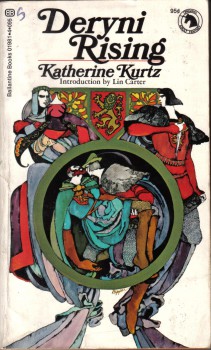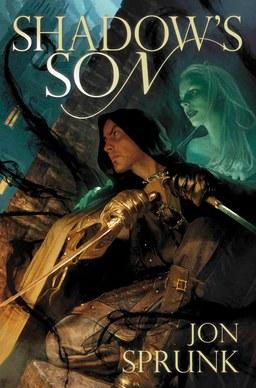Lord Dunsany and the Billiards Club
 I’ve always thought that “Lord Dunsany” has to be one of the more perfect names for a fantasy author. You might argue that this isn’t his name, merely his title, and that Edward Plunkett might not sound quite so perfect, fantasy-wise. But on the other hand, it’s really Edward John Moreton Drax Plunkett, and growing up I always believed that the “Drax” must somehow derive from “draco.” While I’ve never been able to confirm that, I still feel that it should be so, and that in a perfect world, someone in his lordship’s family was named for a dragon – which really would make it the perfect name for a fantasy author.
I’ve always thought that “Lord Dunsany” has to be one of the more perfect names for a fantasy author. You might argue that this isn’t his name, merely his title, and that Edward Plunkett might not sound quite so perfect, fantasy-wise. But on the other hand, it’s really Edward John Moreton Drax Plunkett, and growing up I always believed that the “Drax” must somehow derive from “draco.” While I’ve never been able to confirm that, I still feel that it should be so, and that in a perfect world, someone in his lordship’s family was named for a dragon – which really would make it the perfect name for a fantasy author.
All of which would work out quite well, not just for his lordship, but for us, since Dunsany is one of the leading figures in 20th-century fantasy, whose work predates that of Lewis and Tolkien. The quality that I’ve always associated with Dunsany’s writing is an air of sublimity. There’s always the feeling in his work of great immensity, of something just outside of our reach, that we’re only being shown a part of a much greater whole. A couple of posts ago, I was talking about types of magic, and in those terms, Dunsany’s falls into the category of the mysterious, rather than the quantifiable.
 As I said in my last post, I went out of town for the first weekend of August, and thus missed a couple days’ worth of movies playing at the Fantasia film festival. I was able to catch up with some on Monday, though. Fantasia maintains a screening room, with workstations where journalists, industry people, and other accredited folks can watch movies on computer. It’s not the optimal way to experience a film — they’ve usually been burned onto a DVD or accessed through a private Vimeo account — but it’s serviceable if you can’t catch the movie any other way. The screening room usually loses rights to the movies shortly after they play at the festival, but when I went by on Monday, there were still quite a few available.
As I said in my last post, I went out of town for the first weekend of August, and thus missed a couple days’ worth of movies playing at the Fantasia film festival. I was able to catch up with some on Monday, though. Fantasia maintains a screening room, with workstations where journalists, industry people, and other accredited folks can watch movies on computer. It’s not the optimal way to experience a film — they’ve usually been burned onto a DVD or accessed through a private Vimeo account — but it’s serviceable if you can’t catch the movie any other way. The screening room usually loses rights to the movies shortly after they play at the festival, but when I went by on Monday, there were still quite a few available.


 A week ago, on Thursday, July 31, I saw yet another movie at the Fantasia Festival. Then I left town for the weekend to attend to some business of my own. I got back in on Sunday, and went to see another movie Monday evening. By that time, I’d also been able to catch up on a couple of films that I’d missed over the weekend — but I’ll be talking about them later. For the moment, I’ll discuss the films I saw in the Fantasia theatres.
A week ago, on Thursday, July 31, I saw yet another movie at the Fantasia Festival. Then I left town for the weekend to attend to some business of my own. I got back in on Sunday, and went to see another movie Monday evening. By that time, I’d also been able to catch up on a couple of films that I’d missed over the weekend — but I’ll be talking about them later. For the moment, I’ll discuss the films I saw in the Fantasia theatres.
 I didn’t see any films at Fantasia on Monday, July 28, and then on the 29th I saw two. One was Guardians of the Galaxy, which
I didn’t see any films at Fantasia on Monday, July 28, and then on the 29th I saw two. One was Guardians of the Galaxy, which 
 I saw two movies in the late afternoon and evening of the Sunday before last (the 27th). Both were documentaries. You’d think that the first one would have had the more obvious science-fiction content, being a biography of an actor who rose to fame playing a character on perhaps the best-known science-fiction TV show of all time — while the second film was an in-depth examination of what sounds like the most mundane substance in the world. This did not turn out to be the case. The old saying about truth, fiction, and strangeness applies.
I saw two movies in the late afternoon and evening of the Sunday before last (the 27th). Both were documentaries. You’d think that the first one would have had the more obvious science-fiction content, being a biography of an actor who rose to fame playing a character on perhaps the best-known science-fiction TV show of all time — while the second film was an in-depth examination of what sounds like the most mundane substance in the world. This did not turn out to be the case. The old saying about truth, fiction, and strangeness applies.